One of the strongest trends in interiors is biophilic design—the movement which seeks to blur the distinction between indoor and outdoor living and strengthen the human connection to the Great Outdoors.
A myriad of principles makes up this movement. These include the use of natural materials in home fixtures and furniture, the imitation of natural shapes and forms, the use of natural light, the creation of a sense of refuge, and the presence of indoor plants and trees.
If you are keen to hop on this trend, what species should you choose and how can you best care for your plants and trees, so they stand the test of time? Lets dig into biophilic designs and find out.
More...
Biophilic Design: Effects of Greenery on Mental Health and Productivity
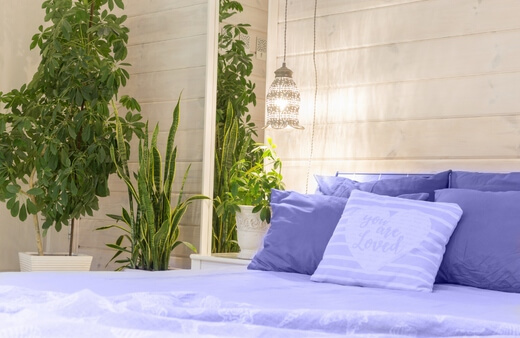
Filling your home with trendy trees and plants of all lengths and sizes, and finding a myriad of ways to place them (in plant stands, hanging off wooden beams, and sitting on countertops) can boost your mental health.
Studies have shown that employees who work amidst plants are more productive. Greenery additionally has a powerful effect to lower stress hormone levels and lift mood. Whether you telecommute or you simply use your home as a refuge, adding plants and trees helps strengthen your wellbeing while also creating a sense of warmth and cosiness.
Plants for Your Biophilic Design
The good news about indoor gardening is that there are species for all personalities and tastes. For instance, if you aren’t much of a green thumb and you don’t want to have to garden your plants frequently, then a yucca plant is a great match for you.
If, on the other hand, you enjoy tending to your plants and trees assiduously, then a money tree or even a bonsai is ideal. Below is a select list of trees and plants, with instructions on how to take care of them.
Calamondin Orange Tree
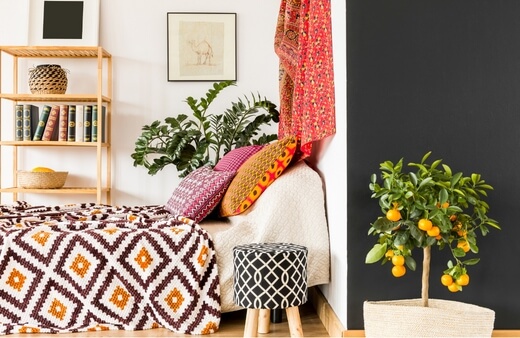
Imagine having your own mini-orange tree at home; one that grows perfectly well in a large pot and that survives throughout the year. Calamondin trees produce small, ultra-sour fruits, but they are pretty to look at, and they have fragrant white flowers that lend a beautifully sweet smell to your interiors.
To keep your Calamondin in good condition, keep it under bright, direct sunlight (a sunny spot by the window is ideal) and water it around once a week. Allow the surface to completely dry before watering again, as soggy soil causes root rot.
To avoid rot, use a soil-less potting mix based on coconut coir containing perlite or a similar component that accelerates drainage. This tree thrives in temperatures of around 13°C-21°C and relative humidity of between 40% and 50%.
Use an organic fruit tree fertiliser to promote the growth of fruits and flowers. Fertilise your Calamondin in winter using a half-strength, water-soluble fertiliser every 35 days.
When the spring season begins, add a slow-release fertiliser and keep feeding your tree with full-strength, water-soluble fertiliser every 30 days during the growing season.
Majesty Palm Tree
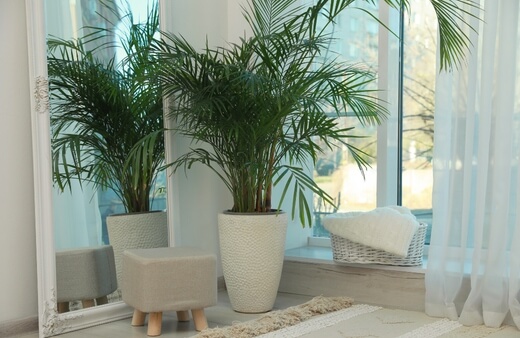
If you have high ceilings, then investing in plants that can show off their vertiginous magnificence is vital. The majesty palm tree can grow up to three metres indoors, at a pace of around .3 metres per year.
These trees also love the sunlight, so make sure yours is placed by a light-filled window. Water it frequently, ensuring its soil never dries completely. However, make sure its pot has drainage holes, so that excess water can escape.
This tree is pretty easy to work out; if its leaves go brown, they need more water. If they are yellow, they may need less watering. Fertilise this majestic tree every two or three months during the warmer seasons, and don’t fertilise it at all in the winter.
Majesty palms can thrive in temperatures of between 18°C and 29°C. They additionally enjoy humid environments. Use a fine mist mister or humidifier to give them all the humidity they crave.
Lemon Cypress Tree
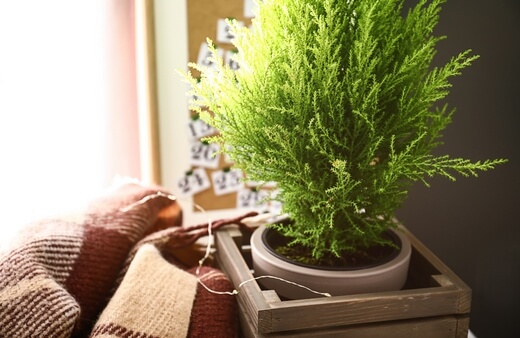
Few fragrances are quite as pleasant as citrusy smells and if you love the scent of lemon, the Lemon Cypress is an ideal choice. This shrub loves direct light, so once again, offer up a window seat for this special species, which grows up to almost one metre tall.
Turn the plant around frequently, to ensure all of its parts receive enough sunlight. Water your Lemon Cypress weekly and keep it at a temperature of around 16°C. This plant may love the sun, but it loves cool indoor temperatures.
If it is your Lemon Cypress’ first season, then you will need to water it twice weekly. If you see brown needles appear, it’s a sign that your plant is dehydrated. This beauty requires well-draining soil but thrives equally in a wide array of chalky, loamy, or sandy soils. Make sure to fertilise it every spring.
Dragon Tree
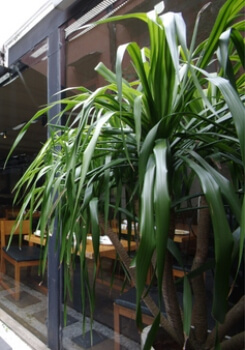
Dragon trees require bright, indirect light. If they receive direct sunlight, they can become scorched, so make sure to find the perfect spot for them. Experts usually recommend that owners keep this plant in the bathroom or kitchen, since these are humid spaces.
The ideal temperature for this species is around 18-32°C. Dragon trees should not be overwatered, so make sure the surface is dry before rewatering your tree. Use a free-draining potting compost with extra grit.
Fertilise your Dragon Tree every 15 days in the summer, using a balanced liquid fertiliser at half strength. Click here for more details on how to grow, propagate, and care for dragon trees.
Arbequina Olive Tree
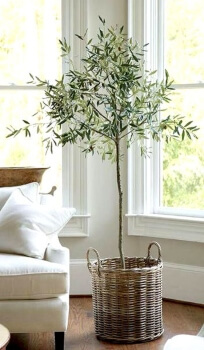
Source: plantogram.com
Olive trees are one of the prettiest that exist, and they have the added bonus of bearing fruit (or in this case, Arbequina olives). They grow up to 2.5 metres tall, provided they are grown in the right conditions.
Water this tree twice-weekly, keep it in direct light. Grow it in a space with a temperature of 7°C or above. Feed it twice a year—once in the spring and once in the autumn.
Check out our comprehensive guide to growing Olive trees in Australia to get to know more about these astonishing trees.
Embrace the Biophilic Design Trend
If you love indoor plants and trees, now is a great time to fill your interiors with beautiful, fragrant species. Just a few trees and plants you may consider are the Calamondin Orange, Majesty Palm, Lemon Cypress, Dragon, and Arbequina Olive Trees.
Place them in the right spot, water them as required, and don’t forget to feed them during suitable seasons of the year. Incorporate these plants to your biophilic design.
Published on October 28, 2022 by Gary Clarke
Last Updated on February 22, 2024




